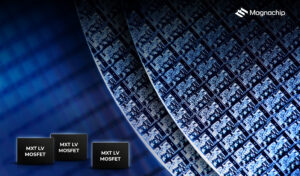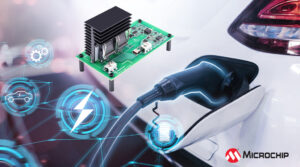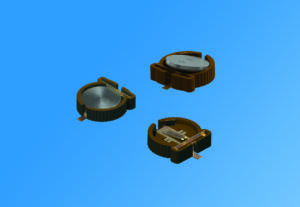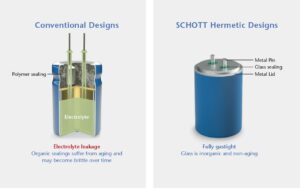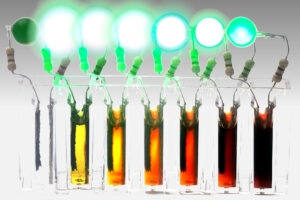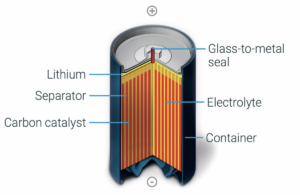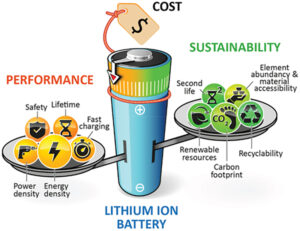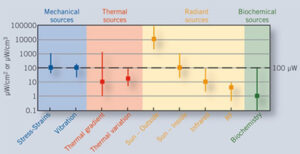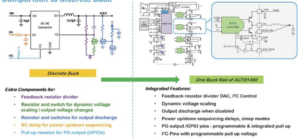Magnachip Semiconductor Corporation announced that the Company has released four new MXT LV Metal-Oxide-Semiconductor Field-Effect Transistors (MOSFETs)*, using Super-Short Channel technology, to further expand Magnachip’s seventh-generation MXT LV MOSFET line-up for battery protection circuits of mobile devices. Super-Short Channel is Magnachip’s latest design technology to reduce Ron (the resistance of MOSFETs during on-state operation) by shortening the…
SiC-enabled demo board available in six variant for 400 – 800 V battery systems
To provide BEV and HEV designers with a faster and more reliable high-voltage circuit protection solution, Microchip Technology announces the E-Fuse Demonstrator Board, enabled by silicon carbide (SiC) technology, available in six variants for 400–800V battery systems and with a current rating up to 30 amps. The E-Fuse demonstrator can detect and interrupt fault currents in microseconds,…
“Vibra-Fit” 12mm coin cell holders
The demand for printed circuit board designs requiring retention of the 1220, 12mm diameter lithium coin cells has been met by Keystone Electronics Corp. This extremely rugged holder is ideal for retaining cells securely under severe shock and vibration in high-density PCB applications. These surface mount holders for use with most vacuum and mechanical pick-and-place…
How do consumer and industrial Li batteries differ?
Consumer (sometimes referred to as commercial) lithium (Li) batteries offer better performance compared with lower-cost alkaline, nickel-cadmium (NiCd), or nickel metal hydride (NiMH) alternatives, but industrial Li batteries are even higher in performance. This FAQ looks at examples of chemistries for primary and secondary Li batteries in consumer and industrial devices including the use of…
What’s different about industrial and medical Li batteries?
In many cases, the difference is related to regulatory demands versus environmental demands. Both segments require high levels of safety and performance from Li batteries. Medical applications have numerous strict regulatory and certification requirements while industrial systems tend to have more challenging environmental performance needs. This FAQ looks at the extensive standards defined for medical…
How do the six most common Li primary chemistries compare?
Rechargeable lithium-ion batteries get a lot of headlines, but primary Li battery chemistries are the workhorses in a large number of industrial, medical, consumer, and other applications. This article looks at the performance tradeoffs and typical applications for the six most common Li primary chemistries including LiCFX (lithium poly carbon monofluoride) LiMN02 (lithium manganese dioxide),…
How can primary Li batteries contribute to sustainability?
A lot has been written regarding rechargeable lithium (LI) batteries and sustainability. Primary (non-rechargeable) Li batteries can also make major contributions to improving the sustainability of the systems where they are used. This FAQ reviews some of the factors related to the sustainability of primary Li batteries including key performance indicators (KPIs), downcycling versus recycling,…
When to use energy harvesting and when to use long-life batteries
Energy harvesting (EH) can be an attractive way to power wireless internet of things (IoT) and other small devices. EH can be combined with rechargeable batteries, capacitors, or supercapacitors to provide enhanced performance. Depending on the circumstances, primary batteries can provide a more reliable and even lower-cost option. This FAQ looks at ways to classify…
Fuse protects Li-Ion batteries from overcurrent and overcharging
Littelfuse, Inc. announced the extension of its ITV9550 surface-mountable Li-ion battery protector series. These fuses safeguard battery packs against overcurrent and overcharging (overvoltage) conditions. The latest ITV9550 addition provides a 60 amp, three-terminal fuse in a 9.5 x 5.0 mm footprint. The innovative design incorporates an embedded fuse and heater elements that provide fast response and…
Inside a modern power management IC
PMICs today do a lot more than just regulate voltages. Here’s a look at high-end functions these devices provide. Narasimhan Trichy • Qorvo Superior power management and high efficiency have become essential as electronics have become increasingly smaller and more streamlined. The reduction of power dissipation and consequent heat and thermal issues is critical to […]

